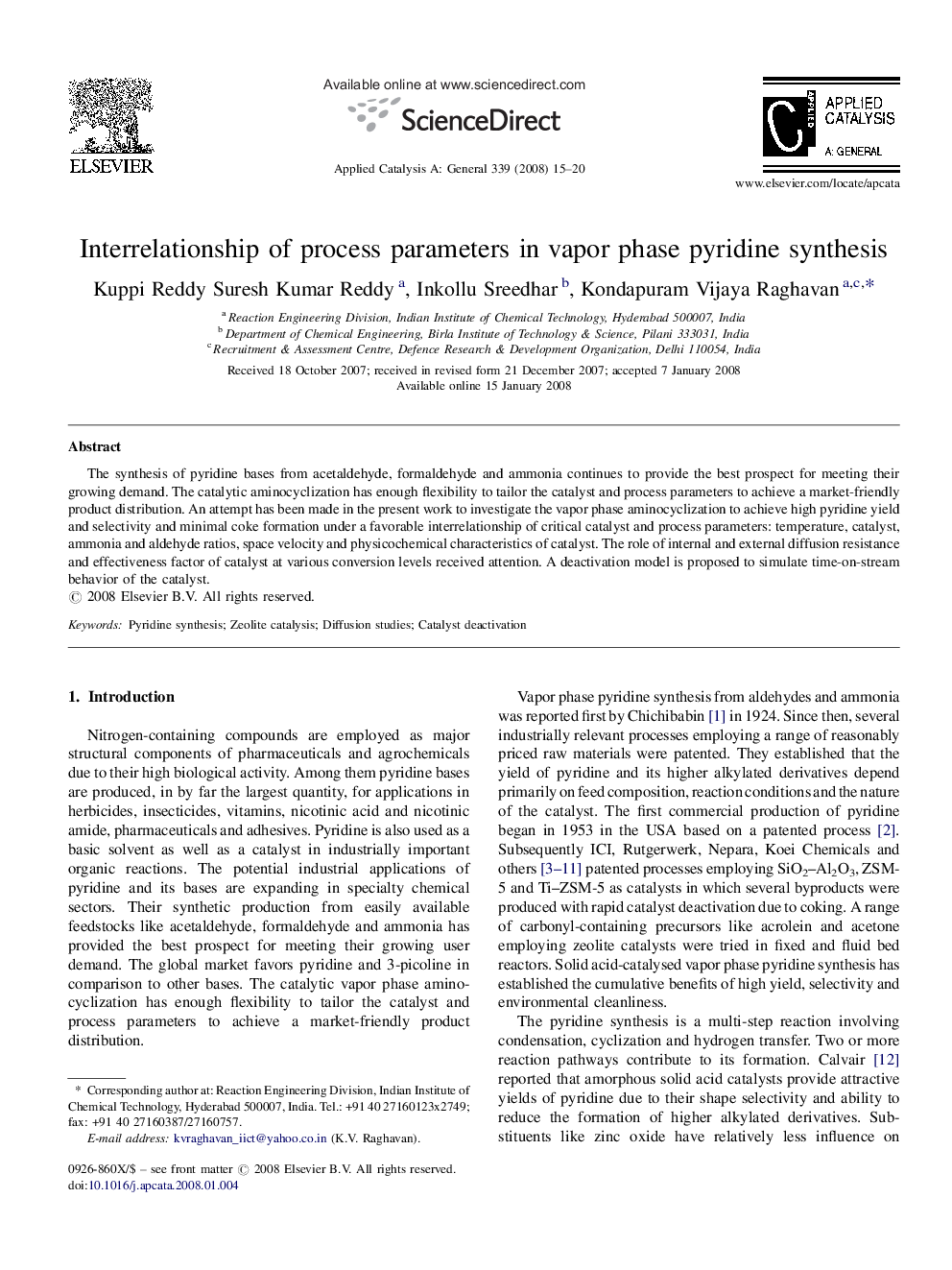| Article ID | Journal | Published Year | Pages | File Type |
|---|---|---|---|---|
| 43274 | Applied Catalysis A: General | 2008 | 6 Pages |
The synthesis of pyridine bases from acetaldehyde, formaldehyde and ammonia continues to provide the best prospect for meeting their growing demand. The catalytic aminocyclization has enough flexibility to tailor the catalyst and process parameters to achieve a market-friendly product distribution. An attempt has been made in the present work to investigate the vapor phase aminocyclization to achieve high pyridine yield and selectivity and minimal coke formation under a favorable interrelationship of critical catalyst and process parameters: temperature, catalyst, ammonia and aldehyde ratios, space velocity and physicochemical characteristics of catalyst. The role of internal and external diffusion resistance and effectiveness factor of catalyst at various conversion levels received attention. A deactivation model is proposed to simulate time-on-stream behavior of the catalyst.
Graphical abstractThe synthesis of pyridine bases from acetaldehyde, formaldehyde and ammonia continues to provide the best prospect for meeting their growing demand. This work aimed to analyse and optimize the vapor phase aminocyclization to achieve high pyridine selectivity and minimal coke formation under a favorable interrelationship of critical process parameters.Figure optionsDownload full-size imageDownload as PowerPoint slide
